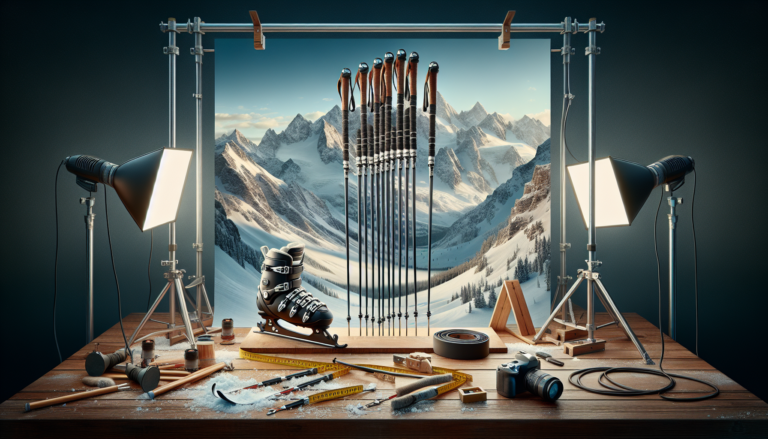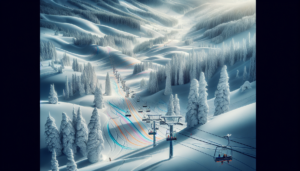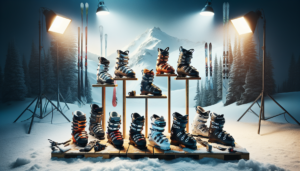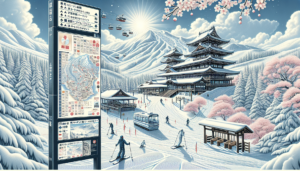Ski poles are an essential piece of equipment for any skier, providing balance, stability, and rhythm while navigating the slopes. However, choosing the right length of ski poles can be a daunting task for beginners and experienced skiers alike. In this comprehensive guide, we’ll explore the factors that influence ski pole length, the different types of poles available, and expert recommendations for finding the perfect fit.
Introduction to Ski Pole Sizing
Why Ski Pole Length Matters
The length of your ski poles can significantly impact your skiing experience. Poles that are too short can cause you to hunch over, leading to poor posture and reduced control. On the other hand, poles that are too long can be cumbersome and affect your ability to make quick turns. Finding the right ski pole height is crucial for maintaining proper technique and enjoying your time on the slopes.
General Guidelines for Ski Pole Length
As a general rule of thumb, your ski poles should reach somewhere between your chin and nose when standing upright with the tips on the ground. Another common method is to hold the pole upside down, with your hand just under the basket. When your elbow is bent at a 90-degree angle, the pole is the correct length. These guidelines provide a starting point for finding the right ski pole fit, but there are other factors to consider.
Factors Influencing Ski Pole Length
Skier’s Height and Ski Pole Length
Your height is the primary factor in determining the appropriate ski pole length. Most manufacturers provide size charts that recommend pole lengths based on height ranges. As a general guide:
- Skiers under 5’0″ should use poles between 38-44 inches
- Skiers between 5’0″ and 5’6″ should use poles between 44-50 inches
- Skiers between 5’6″ and 6’0″ should use poles between 50-56 inches
- Skiers over 6’0″ should use poles between 56-62 inches
Keep in mind that these are just guidelines, and personal preference and skiing style may influence your final choice.
Skiing Style and Pole Length
Your skiing style can also affect the ideal ski pole length. For example:
- Racing: Racers often prefer shorter poles for quick turns and gates
- Freestyle: Freestyle skiers may opt for shorter poles for easier maneuverability
- Powder: Skiers in deep powder may choose longer poles for better balance and pushing power
Adjusting pole length based on your skiing style can help you achieve the best performance and comfort on the slopes.
Types of Ski Poles
Racing Poles
Racing poles are designed for speed and agility. They are typically made of lightweight materials like carbon fiber and have smaller baskets to reduce drag. Racers often choose poles that are slightly shorter than the standard size for their height.
Nordic Poles
Nordic ski poles, also known as cross-country poles, are longer and thinner than traditional downhill poles. They are designed for propulsion and stability on flatter terrain and are usually made of lightweight aluminum or carbon fiber.
Powder Poles
Powder ski poles are designed for deep snow conditions. They feature large, wide baskets to prevent the pole from sinking into the snow. Some powder poles also have adjustable lengths to accommodate varying snow depths.
Freestyle Poles
Freestyle poles are shorter and more durable than other types of poles. They are designed for the rigors of terrain parks and halfpipes, with features like reinforced shafts and grips for added strength.
Alpine Poles
Alpine poles are the most common type of ski pole and are suitable for most recreational skiers. They have medium-sized baskets and are available in a range of materials, from affordable aluminum to high-end carbon fiber.
Materials and Features of Ski Poles
Aluminum vs. Carbon Fiber
Ski poles are typically made of either aluminum or carbon fiber. Aluminum poles are more affordable, durable, and suitable for most skiers. Carbon fiber poles are lighter and more expensive, offering improved performance for advanced skiers and racers.
Importance of Wrist Straps
Wrist straps are an essential safety feature of ski poles. They keep the poles attached to your hands, preventing loss during falls or when riding lifts. Make sure to adjust your straps properly for a secure and comfortable fit.
Adjustable and Telescoping Poles
Adjustable ski poles allow you to change the length of the pole to suit different terrain and snow conditions. Telescoping poles are particularly useful for backcountry skiers, as they can be collapsed for easy storage during ascents.
Common Mistakes and Maintenance Tips
Avoiding Common Sizing Mistakes
One of the most common mistakes skiers make is choosing ski poles that are too long. Remember, your poles should be shorter than you might think, allowing for a comfortable bend in your elbows. When in doubt, opt for a slightly shorter pole rather than one that is too long.
Maintenance Tips for Ski Poles
To keep your ski poles in top condition, follow these maintenance tips:
- Wipe down your poles after each use to remove snow and moisture
- Check your poles for signs of wear and tear, such as bent shafts or loose baskets
- Store your poles in a dry place during the off-season to prevent rust and corrosion
Regular maintenance can extend the life of your poles and ensure they perform their best on the slopes.
Conclusion and Expert Recommendations
Final Thoughts on Ski Pole Sizing
Finding the right ski pole length is essential for comfort, control, and performance on the slopes. By considering your height, skiing style, and the type of poles you need, you can narrow down your options and find the perfect fit. Remember, the ideal pole length allows for a comfortable bend in your elbow and feels natural when skiing.
Resources for Further Assistance
If you’re still unsure about how to choose the right ski poles, don’t hesitate to seek expert advice. Visit a local ski shop or talk to a professional ski instructor for personalized recommendations based on your height, skill level, and skiing style. Online resources, such as sizing charts and customer reviews, can also provide valuable insights into finding the best ski poles for your needs.






